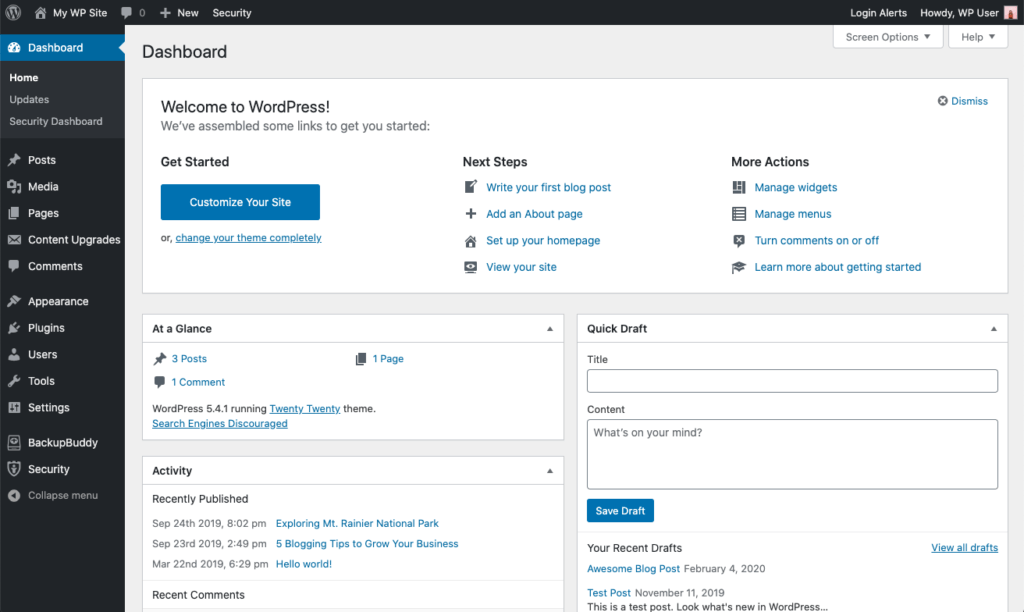WordPress.Org launched WordPress 4. Eight, adding a slew of the latest capabilities to the blog control tool “to specific yourself and constitute your emblem.” You can download the new release, to be had in 38 languages, now from WordPress.Org/Download (8.5MB). WordPress is a content control gadget (CMS) that powers 25 percent of the internet. The present-day model is dubbed “Evans,” in honor of jazz pianist and composer William John “Bill” Evans. WordPress 4.8 introduces link boundaries. If you’ve ever attempted updating a link or the textual content around a hyperlink and found that the wrong textual content ends up being related, that is for you. Link barriers streamline the process of editing hyperlinks, with a bit of luck ensuing in much less frustration.
S for the widget enhancements, you may now upload a photograph to a widget without needing to know the code, upload any video from the Media Library to a sidebar in your web page, and upload a device for any audio record to your Media Library. Lastly, wealthy-textual content enhancing capabilities are now native for Text widgets: create lists, upload emphasis, and insert links. The Events and News Dashboard device now attracts your attention to close-by events for those who need to enhance their WordPress skills. All upcoming WordCamps and respectable WordPress Meetups are properly when you log in for your dashboard.

More Accessible Admin Panel Headings: New CSS policies mean extraneous content (like “Add New” links) is now not desired to be protected in admin-vicinity headings. These panel headings enhance the experience for humans using assistive technologies. Removal of Core Support for WMV and WMA Files: As fewer and fewer browsers support Silverlight, report formats requiring the Silverlight plugin’s presence are being removed from the center support. Files will nonetheless display as a download link. However, they will not be embedded mechanically.
Multisite Updates: New skills were added to 4.Eight with a watch closer to eliminating calls to is_super_admin(). New hooks and tweaks for greater granular website control and person counts in step with the network were also introduced. Text-Editor JavaScript API: With the addition of TinyMCE to the textual content widget in four. Eight comes with a new JavaScript API for instantiating the editor after the web page loads. This may feature an editor instance to any text vicinity and personalize it with buttons and functions. Media Widgets API: Creating a new base media widget REST API schema to 4. Eight opens opportunities for even more media widgets (like galleries or playlists) inside Destiny.
The three new media widgets are powered by a shared base class covering most of the media modal interactions. That magnificence makes it simpler to create new media widgets and paves the way for the future. Customizer Width Variable: New responsive breakpoints have been delivered to the Customizer sidebar to make it wider on excessive-decision screens. Customizer controls should use percentage-primarily based widths as opposed to pixels. The crew did no longer mention WordPress four. Nine or 5.0; however, possibly the subsequent model is already being labored on and can be released in a few months.
Imagine Google constructed your internet site.” That’s the pitch Google sent to choose advert publisheinate August as it began selling an experimental carr, Googlegle Publish. In the arms of beta testers locked into non-disclosure agreements, Google Publish started life as a cell website builder — a button for generating speedy, cell-friendly websites powered using testers’ present weblog feeds. Google promised the publishers and bloggers as much as “2x quicker” websites and “35 percent greater revenue” if they used Publish, suggesting it had magically solved two of the web’s biggest troubles and packaged the remedy into some WordPress killer.
As a primary step, Google requested Publish testers to divert some of their blog’s cellular traffic to their new Google web page. If testers liked the effects, they might switch their mobile visitors to the provider. With a one-two punch, Google should replace a crappy mobile website and lock customers deeper into its marketing product, Adsense. This purpose overlapped with AMP, Google’s open supply undertaking to update clunky cell sites with slimmed-down layouts and reduced ads. But then Google Publish (inevitably) advanced: It started looking like a full content control gadget (CMS) — an actual publishing tool. Google brought capabilities for posting testimonies immediately within the Publish carrier and suggested that bloggers switch to Publish, abandoning their original CMS and web host.
READ ALSO :
- Trains, planes, and vehicles: the delivery systems embracing smart tech
- SEO – Best and Simple search engine optimization Tips
- 9 Best WordPress Security Plugins to Secure Your Website
- Cool Quotes About Life, Love, and Thought
- Are these the latest risk devices Dad and Mom are being warned about?




